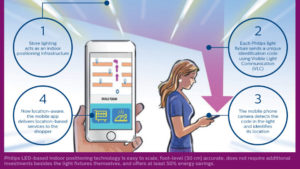Shoppers, imagine navigating the grocery store with a list that takes you through the aisles in the most expeditious way possible while simultaneously notifying you of nearby sales. In addition to getting real-time wayfinding and savings tips, imagine finding the exact product you want with no effort.
Store managers, imagine instantly tracing and quantifying products from stockroom to sales floor and locating bestselling items on high-density shelving. Consider the amount of time saved if notifications told you when it’s time to order and when to move products to the sales floor to meet demand.
When going to a doctor’s appointment, imagine a map that tells you exactly where to go, locates available parking spots, and provides up-to-date wait times. Catching a train at Grand Central Station? Identify your platform instantly, find out when the train is pulling in, and before it even stops, know which cars are business class, coach, the café car, and which cars have open seats. At the airport, a map takes you directly to your gate and shares which security lines are the longest, locates the closest available charging stations, and tells you where to buy that item you forgot to pack.
These scenarios are all possible thanks to modern innovations using light-emitting diodes (LEDs). Programmable drivers and Bluetooth interfaces allow LED fixtures to communicate with one another. The technology is called Visible Light Communication (VLC), a wireless method of using LED light to deliver fast, networked communication. The technology involves turning LEDs on and off very quickly – in a matter of nanoseconds – and at a high frequency. A VLC signal cannot penetrate walls, so special beacon devices can be placed in several locations to act as anchor points and transmit positioning data to one another and then to the smart device. Through this method, buildings with many structural obstructions, such as airports and grocery stores, can still reap the benefits of VLC.
To collect and use data about specific people and things in an indoor environment, VLC technology utilizes an Indoor Positioning System (IPS). Like an indoor GPS, IPS locates people or items inside buildings and then relays the information to a smart device via an application. The technology collects data using internal sensors inside a smartphone to instantaneously find the exact position of the device. An IPS can then use that data to assist with all sorts of tasks. Although the technology is still relatively new, retail stores, hospitals, airports, and other indoor environments have already begun to use IPS to assist with wayfinding, locate products, and more.
It may seem like something straight out of The Jetsons, but VLC and IPS are becoming increasingly indispensable to businesses and organizations who have taken the user experience to the next level.
*Lighting Lesson by Rochelle Spahn, former Associate with The Lighting Practice



